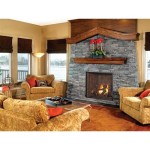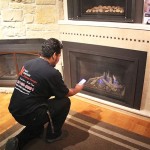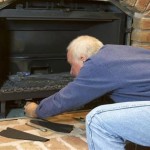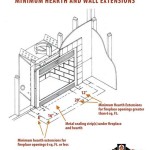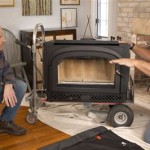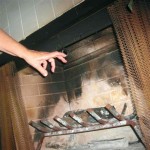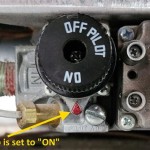How To Child Proof Your Fireplace Hearth: A Comprehensive Guide
A fireplace hearth, while adding aesthetic appeal and warmth to a home, can pose a significant safety risk to young children. Its hard surfaces, sharp edges, and potential for burns necessitate thorough childproofing measures. This article provides a comprehensive guide on how to effectively childproof a fireplace hearth, minimizing the risk of injury to infants and toddlers.
Identifying Potential Hazards
Before implementing any safety measures, it is crucial to identify the specific hazards presented by the fireplace hearth. These hazards typically include:
Sharp Edges and Corners: The edges and corners of a hearth are often made of stone, brick, or other hard materials. These can cause serious injuries if a child falls and hits their head or body against them.
Hard Surfaces: The unyielding nature of the hearth surface makes it a dangerous area for falls. A simple stumble can result in bumps, bruises, or even fractures, especially for young children with developing motor skills.
Heat: Even when not actively in use, a fireplace and the surrounding hearth can retain heat for an extended period, especially after a fire has been burning. Contact with these surfaces can lead to burns.
Falling Objects: Decorations or tools placed on or near the hearth, such as fireplace tools, decorative logs, or candles, can be pulled down by curious children, causing injury.
Entrapment: The space between the hearth and the wall or furniture can sometimes create a potential entrapment hazard for small children.
Implementing Effective Safety Measures
Once the hazards have been identified, appropriate safety measures can be implemented. These measures can range from simple solutions to more involved modifications, depending on the type of fireplace and the needs of the family.
Hearth Guards and Bumpers: Hearth guards and bumpers are arguably the most effective way to childproof a fireplace hearth. These padded barriers attach to the hearth's edges and corners, softening the impact of falls and preventing access to the sharpest areas.
There are several types of hearth guards available:
Foam Bumpers: These are often made of dense foam and attach to the hearth with adhesive. They are relatively inexpensive but may not offer the same level of protection as more robust options. Foam bumpers are better suited for hearths with simple, straight edges.
Corner Cushions: These are designed specifically for the corners of the hearth and are typically made of a thicker, more durable material like PVC or rubber. They provide excellent protection against sharp corners, a common source of injury.
Custom Hearth Guards: For hearths with unique shapes or sizes, a custom-made hearth guard may be necessary. These are typically fabricated from wood or metal and can be designed to fit the specific dimensions of the hearth. While more expensive, custom guards offer a tailored solution that maximizes safety and blends seamlessly with the room's decor.
When selecting a hearth guard, prioritize the following factors:
Material: Choose a material that is durable, non-toxic, and easy to clean. Avoid materials that might contain small parts that could be choking hazards.
Attachment Method: Select a guard that attaches securely to the hearth without damaging the surface. Adhesive options should be strong enough to withstand a child's pulling or pushing attempts but also removable without leaving residue.
Coverage: Ensure the guard provides adequate coverage of all sharp edges and corners.
Appearance: While safety is paramount, consider the aesthetic impact of the guard on the room. Choose a style and color that complements the existing decor.
Fireplace Screens and Barriers: Fireplace screens and barriers serve a dual purpose: preventing children from accessing the fire and protecting them from burns from hot surfaces. These are essential even when the fireplace is not actively in use, as residual heat can pose a risk.
Different types of fireplace screens are available:
Mesh Screens: These are the most common type of fireplace screen and consist of a metal mesh panel that covers the fireplace opening. They are effective at preventing embers from escaping and offer a basic level of protection against burns.
Glass Doors: Glass doors offer a more permanent and aesthetically pleasing solution. They provide excellent protection against drafts and heat loss and prevent children from accessing the fire. However, the glass itself can become hot during use, so it is important to ensure that children are supervised around the fireplace when it is in use.
Freestanding Barriers: These are portable barriers that can be placed around the fireplace to create a safe zone. They are typically made of metal or wood and can be easily moved or removed when not needed. Freestanding barriers are particularly useful for families with young children who are not yet able to understand the dangers of fire.
Key considerations when selecting a fireplace screen or barrier:
Size and Fit: The screen or barrier should be large enough to completely cover the fireplace opening and prevent children from reaching behind it.
Stability: The screen or barrier should be stable and resistant to tipping. Look for models with wide bases or anchoring systems.
Material: Choose a material that is heat-resistant and durable.
Latch and Closure: If the screen has a door or opening, ensure that it has a secure latch that children cannot easily open.
Relocation and Redirection Strategies: Creating a clear boundary around the hearth and redirecting a child's attention can be a valuable preventative measure. This strategy relies on establishing a safe zone and consistently reinforcing the boundaries.
Establish No-Go Zones: Define the area immediately surrounding the hearth as a "no-go" zone. Use visual cues, such as rugs or tape, to demarcate the boundary.
Redirection: When a child approaches the hearth, gently redirect their attention to a safer activity or area. Offer an alternative toy or game to engage them and move them away from the hazard.
Consistent Reinforcement: Consistently reinforce the boundaries and the "no-go" zone. Use simple, clear language and avoid scolding or punishment. Positive reinforcement, such as praise for staying away from the hearth, is often more effective.
Additional Safety Considerations
In addition to the primary safety measures outlined above, several other considerations can further enhance the safety of the fireplace hearth.
Secure Fireplace Tools: Fireplace tools, such as pokers, shovels, and tongs, can be dangerous if left within reach of children. Store these tools in a secure location, such as a closed cabinet or a tool stand that is out of reach. Consider using a lockable container if necessary.
Remove Decorations: Avoid placing decorations, such as candles, vases, or decorative logs, on or near the hearth. These items can be easily knocked over or pulled down by children, causing injury.
Educate Children: As children get older, educate them about the dangers of the fireplace and the importance of staying away from the hearth. Explain the risks of burns and falls and teach them how to safely interact with the fireplace, if appropriate.
Regular Inspection: Regularly inspect the hearth guard, screen, and other safety measures to ensure that they are in good condition and properly installed. Replace or repair any damaged components immediately.
Supervision: Even with all of these safety measures in place, constant supervision is crucial, especially when young children are present. Never leave a child unattended near a fireplace, even if it is not in use.
Install Smoke Detectors: Ensure that working smoke detectors are installed and maintained throughout the home, especially near the fireplace. Test the detectors regularly to ensure they are functioning properly.
By implementing these comprehensive childproofing measures, parents and caregivers can significantly reduce the risk of injury to children around the fireplace hearth, creating a safer and more comfortable home environment.

How To Baby Proof A Fireplace Diy Hearth Cushion Simply September

Diy Baby Proofing Your Brick Fireplace Thisaveragemom

How To Baby Proof A Fireplace Diy Hearth Cushion Simply September

Diy Fireplace Hearth Idea For Child Proofing

3 Ways To Baby Proof A Fireplace Wikihow

3 Ways To Baby Proof A Fireplace Wikihow

No Child Proofing For Our Fireplace Hearthstone

How To Baby Proof A Fireplace Diy Hearth Cushion Simply September

How To Baby Proof Fireplace Important Checklist

Baby Proofing Fireplace More Easy Hearth Padding Oh Love

